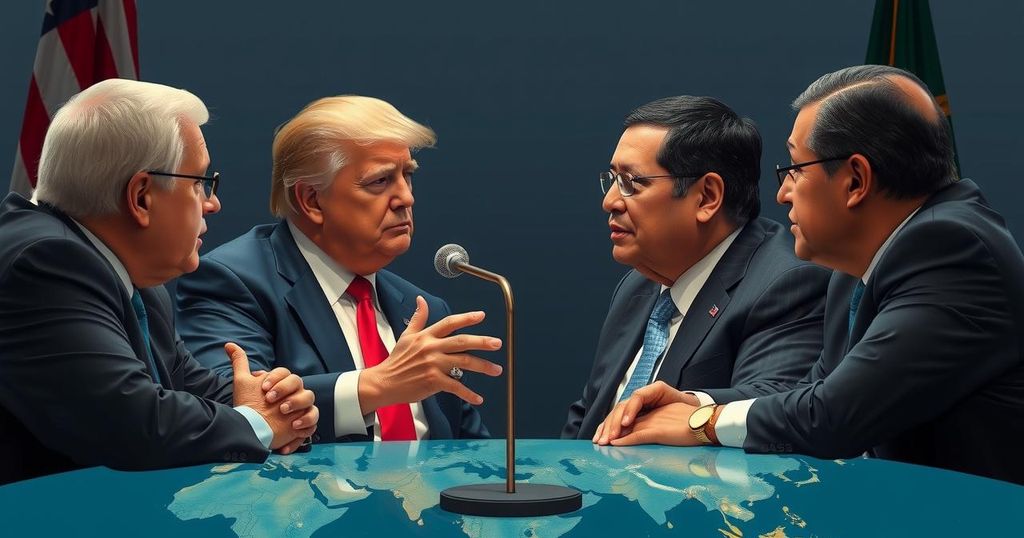Trump Pressures Russia to End Ukraine Conflict Following Assad’s Fall
Shortly after Bashar al-Assad’s regime fell in Syria, President-elect Donald Trump pressured Russia to bring an end to its ongoing conflict in Ukraine, connecting these geopolitical events. This stance reflects Trump’s ambition to redefine U.S. foreign policy as he enters the presidency.
In the wake of Syrian President Bashar al-Assad’s abrupt downfall, President-elect Donald Trump wasted no time in advocating for a cessation of hostilities in Ukraine. Trump directed his call for peace towards Russia, Assad’s primary ally, emphasizing the need to conclude a conflict that has persisted for several years. This strategic maneuver not only connects the turbulent situation in Syria with the ongoing conflict in Ukraine but also underscores Trump’s foreign policy objectives right as he prepares to enter the Oval Office.
This article delves into President-elect Donald Trump’s proactive stance on international conflicts in the wake of significant geopolitical changes. The fall of Assad’s regime represents a pivotal moment in Middle Eastern politics, which could potentially alter Russia’s military engagements worldwide, particularly in Ukraine where its influence has been deeply entrenched. Trump’s call for Russia to halt its aggression in Ukraine could be seen as part of a broader strategy aimed at reconfiguring U.S. foreign relations amidst shifting power dynamics.
In conclusion, President-elect Trump’s pressure on Russia to end the war in Ukraine following Assad’s fall highlights a significant shift in U.S. foreign policy priorities. His actions indicate a potential re-evaluation of alliances and conflicts in the region as he seeks to establish a firm footing in international diplomacy during his presidency. Trump’s unique approach could potentially alter not only U.S.-Russia relations but also impact the resolution of conflicts in the Middle East.
Original Source: www.washingtonpost.com




Post Comment